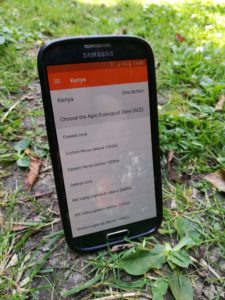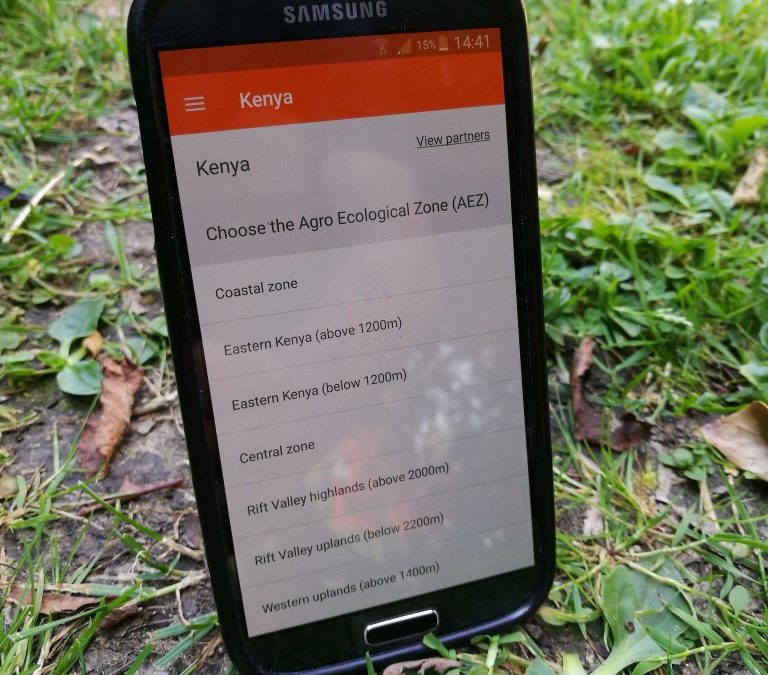DIGITAL FOOD SYSTEMS EVIDENCE CLEARING HOUSE

Implemented in:
Primary users:
Food system component(s):
Food system activity/ies:
Type(s) of digital intervention:
The FOT tool is made up of the Optimizer tool, that works alongside other two complementary tools: nutrient substitution table, and a fertilizer calibration. FOT utilized Excel and an optimization algorithm used to predict the crop-nutrient rate options that could maximize profit.
Description
Fertilizer optimization tool
The FOT tool is made up of the Optimizer tool, that works alongside other two complementary tools: nutrient substitution table, and a fertilizer calibration [13]. The Optimizer tool uses linear programming concepts using MS Excel with the Solver add-in. The extension workers feed in data on crops, acreage, projected price of crop at the time of harvest, cost of fertilizer and the amount to be invested by the farmer in fertilizer that season. The output includes the recommendations for fertilizers to be applied to each crop, the expected mean effect on yield, net returns for each crop, and the expected total net returns. The nutrient substitution table considers farmers’ cropping systems and the effects of Integrated Soil Fertility Management (ISFM) practices such as crop rotations; intercropping, fallowing, application of manure or other organic material, compost and annual and perennial green manure/cover crops [14, 15]. Based on farmers’ practices, the nutrient substitution table helps adjust fertilizer quantities generated by the Optimizer tool. The fertilizer calibration tool is used to convert the recommended fertilizer quantities (expressed as kg of fertilizer per acre or hectare of land), to a more farmer-friendly measure. It is always a challenge for farmers to decide how to uniformly apply the quantities recommended per unit area. This is because, few if any, smallholder farmers have access to scales to weigh out the fertilizer and apply it uniformly to all crops in their plots. To overcome this problem, the calibration tool is developed using locally available materials adapted and used as calibrated measuring scoops. These locally available materials include cut-down, discarded plastic water bottles; bottle tops, such as the crimped metal bottle-tops commonly used to cap beer, rectangular containers, such as empty matchboxes [13].
In order to enhance usability of the tools by extension workers, amidst operational challenges such as low budgetary allocation to acquire important tools (e.g. laptops), access to electricity and other field challenges. The FOT is designed in three versions; computer excel, paper version and mobile app. The paper version considers three levels of farmer financial ability (Level 1, level 2=2/3 of level 1 and level 3=1/3 of level 1) and fertilizer use guidelines are provided based on Marginal Rate of Return. This means where a farmer has one or more crops in the cropping system, some fertilizer application options have priority over other options. The mobile app (https://play.google.com/store/apps/details?id=org.cabi.ofra) provides more versatility for both extension workers and farmers who may want to try out the FOT. More information about FOT can be accessed at http://africasoilhealth.cabi.org/tools/fertilizer-tools/fertilizer-optimisation-tools/.
Estimated number of active users:
- At inception: 20
- At time of last report: 300
Evidence of impact
“I have used fertilizer for about five years now. Each season, I spent about UGX450,000 to buy 50kg DAP and 50kg Urea and 50kg TSP for my maize and groundnuts. I have used FOT for 2 seasons now and I realize that I have used significantly less fertilizer and money than before yet the production is comparable. Last season, I invested UGX100,000 for 1 acre of maize, 1 acre of ground nuts and ½ acre of soybean. The FOT output was 22kg DAP & 22kg Urea for maize, 11kg TSP for ground nuts, and 11kg urea for soybean. For maize, I obtained 16 bags (each 100kg) compared to 10 bags before. This shows that I was wasting my resources”. Paul Okingok.
“The tool indicates how much to spend and how to apply, except one needs to allocate some more labor for the application. I have been used to broadcasting which I can even do in one day. But now with new methods such as banding or point application, I had to hire two people to help me apply fertilizer in my 2.5 acres of groundnuts. Though I acknowledge the saving I made by using the modern method because with broadcasting one can’t be precise thus wasting fertilizer.” Leo Wandera




